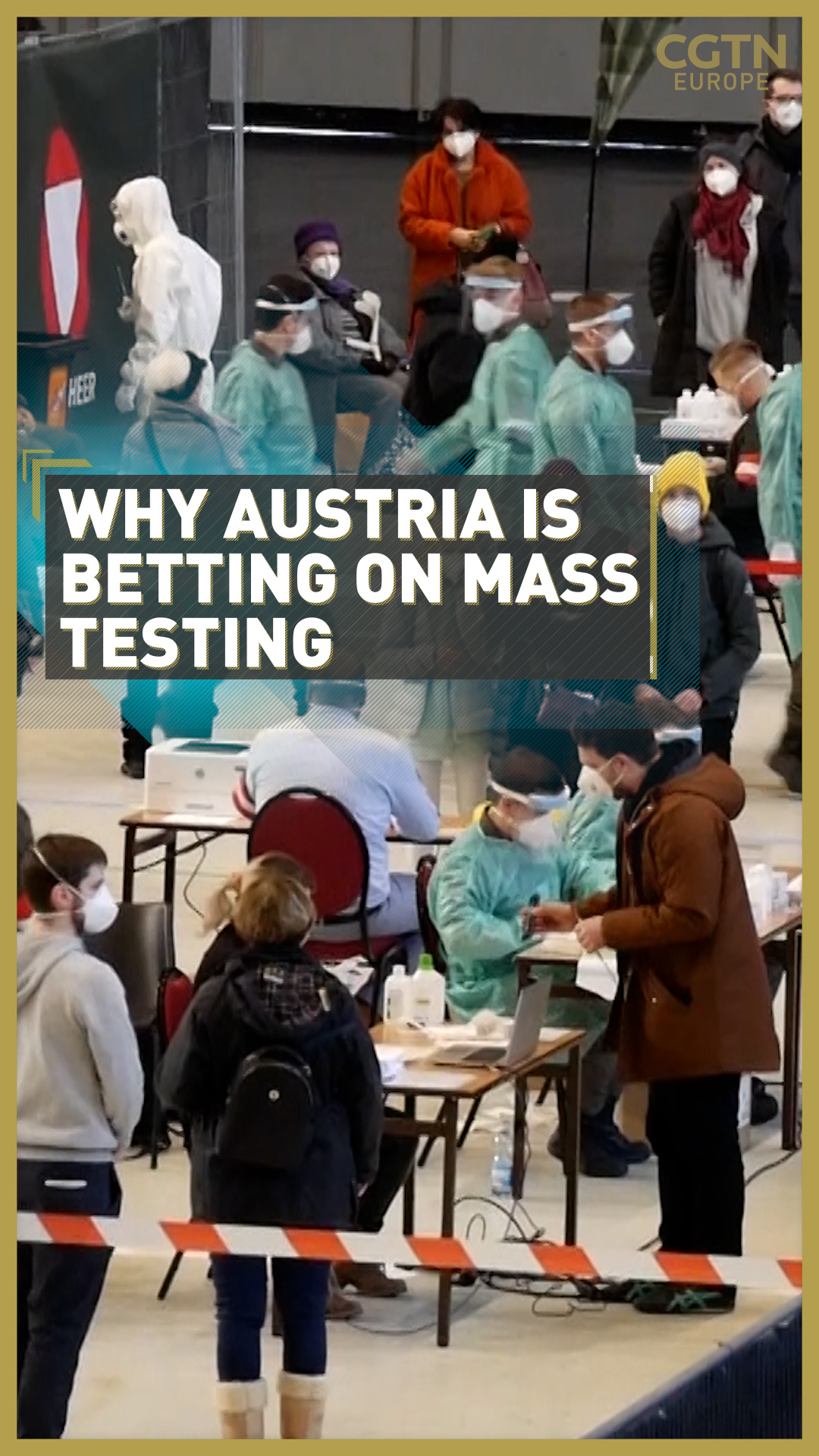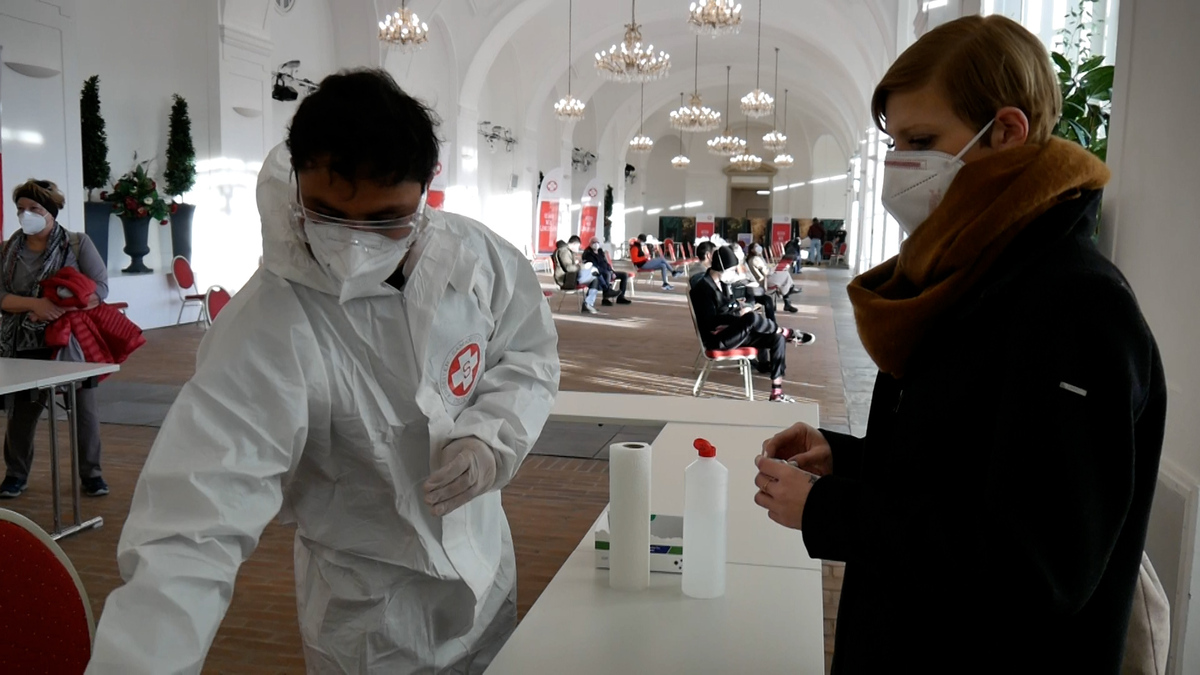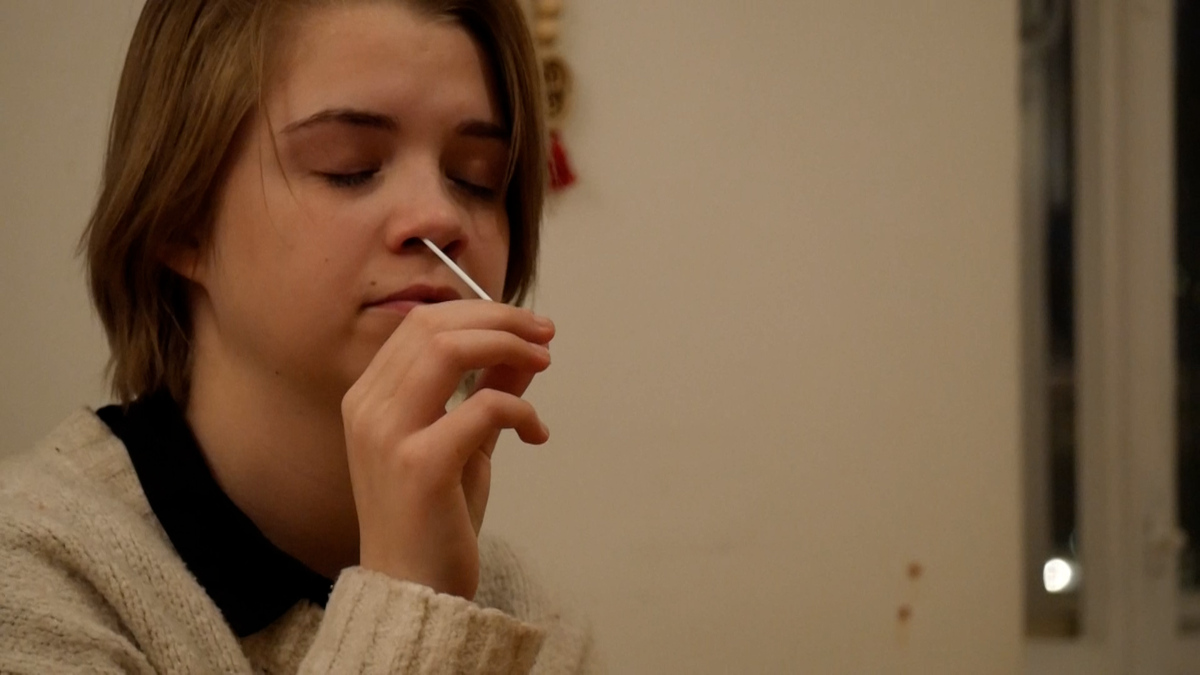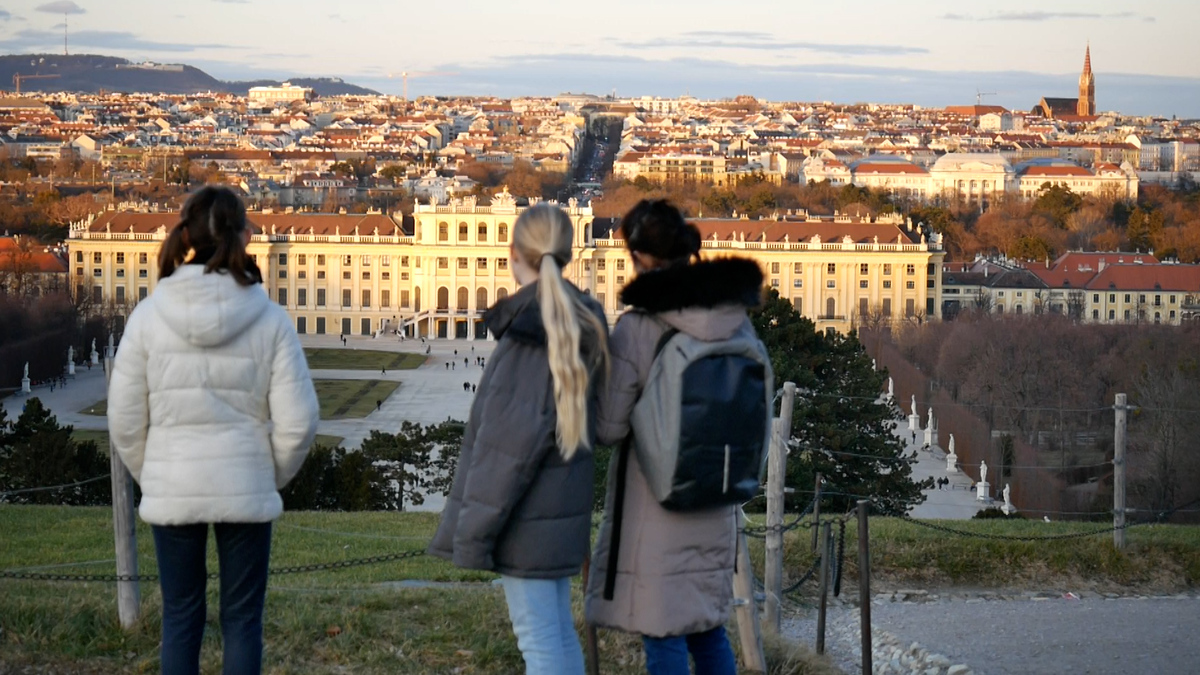02:40

Along with Slovakia and Cyprus, Austria has one of the highest COVID-19 testing rates in the world.
With a recent negative result you can go and get your hair cut and will soon be able to visit bars and restaurants.
Currently the country is testing more than 2.5 million people each week, with a focus on so-called "entry tests" aimed at allowing consumers to return to a more normal life.
This seems to be the only alternative to a hard lockdown as the EU member state struggles with Europe's slow vaccine delivery program. Compared with the UK, where by March 1 roughly 30 vaccination doses have been administered per 100 people, in Austria only about 7 doses per 100 people were administered.

Austria is among the three countries leading the COVID-19 testing race in Europe. /CGTN Europe
Austria is among the three countries leading the COVID-19 testing race in Europe. /CGTN Europe
Austria is offering the opportunity of a free COVID-19 swab in all sorts of places – be it in imperial palaces, large event halls, at a place of work or in the nearest pharmacy – currently a quarter of Austria's population tests itself once a week.
If you go for a walk at Vienna's famous Schoenbrunn Palace, you may as well get tested, because the iconic imperial summer residence has also been turned into a testing center.
Katharina Kreiner, a 19-year-old German literature student living in a studio apartment in Vienna, had picked up a free home test at the pharmacy nearby – the latest innovation in Austria.
Your status can be checked and, even if the result is positive, there is no obligatory registration.

Katharina Kreinier, 19, takes a free COVID-19 test at her studio apartment in Vienna. /CGTN Europe
Katharina Kreinier, 19, takes a free COVID-19 test at her studio apartment in Vienna. /CGTN Europe
"I want to know it for myself," Kreiner explained. "I want to be sure that I am not infected and that I'm not infecting other people. That's important to me because I want to protect my nearest ones," she added.
Key to Austria's approach is the concept of entry tests. For the past three weeks, hairdressers, for instance, may only be visited with a registered negative test result. "We check it immediately when the customer comes at the door," hairdresser Annemarie Kobald said.
But not all of her customers want to be tested, she explained. Half of the customers have stayed away since the reopening.
"Many customers who, for example, normally come every week for a haircut or even twice a week, naturally say 'I don't want to be tested twice a week.' They then only come every 14 days instead and that's why we have fewer customers now."

Vienna's famous Schoenbrunn Palace, now used as one of the city's many COVID-19 testing centers. /CGTN Europe
Vienna's famous Schoenbrunn Palace, now used as one of the city's many COVID-19 testing centers. /CGTN Europe
Most recently, the government has announced that some restaurants and bars with outside space will be able to open. In less than two weeks, tested people will be allowed to eat and drink out again, even if, for now, only in the region with the fewest new infections, namely Vorarlberg.
"We have become the testing world champions through our openings – combined with the entry tests," Austria's Chancellor Sebastian Kurz told journalists during a press conference.
In order to support this approach, the government refers to research published by the Swiss Federal Institute of Technology. "If you test a quarter of the population once a week, the reproduction rate drops by 40 percent," explained Oswald Wagner, vice rector of Medical University Vienna.
With the EU vaccine program beset by delays, Austria is trying to take matters into its own hands through mass testing. It is also working independently with Israel and Denmark to produce second-generation vaccines against current and future mutations of the coronavirus.

